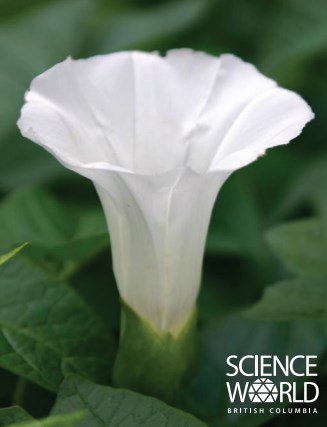Objectives
-
Describe the importance of pollinators in nature.
-
Describe, in general terms, how pollination works.
-
Describe the importance of biodiversity for both pollinators and plants.
-
List a few characteristics of common pollinators (birds, bees, bats, butterflies).
-
List human actions that benefit pollination and pollinators.
Materials
Background
Pollination occurs when insects and animals feed on nectar from flowers. As they reach the nectar, they rub against the pollen and transport it from one flower to another. When this happens, the flower is said to be pollinated.
Flowering plants have several different parts that are important in pollination. Flowers have male parts called stamens that produce a sticky powder called pollen, these tiny grains of pollen contain the male reproductive cells. Most pollen in North America is a yellow or orange colour. The female part of the flower is called the pistil. The top of the pistil is called the stigma, and is often sticky. After pollination, the pollen stuck to the stigma travels from the stigma down the pistil to the eggs in the ovule. Each pollen grain contains one sperm. Once the sperm joins with the egg (fertilization), the egg can develop into a seed surrounded by the fruit.
Some plants can self-pollinate, meaning their own pollen fertilizes the eggs on the same plant. Many plants, however, exhibit cross-pollination; this occurs when pollen from one plant, and lands on a separate plant. Plants need to be the same species or closely related to pollinate together.
There are roughly 200,000 varieties of living pollinators in the wild, most of which are insects. Other animals such as birds, small mammals, and bats can also help with pollination. These living organisms are absolutely crucial for our survival and the vast biodiversity that we see in the world today. Just considering our food crops, over 80% of them rely on pollinators to produce food. Without pollinators, most flowering plants would not produce fruits or seeds, and would ultimately become extinct.
Petals attract pollinators to flowers through their colours, scent, and even warmth. Plants which use bats or moths as pollinators typically have evolved to have flowers with white petals and a strong scent. Plants that use birds as pollinators tend to have flowers with red petals and rarely develop a scent (few birds have a sense of smell). Petals that attract bees are not red because bees cannot see red, but these flowers contain designs in the UV light spectrum which humans cannot see!
The feature of a flower that attracts a particular pollinator towards it is called a pollination syndrome.

Vocabulary
Co-evolution: Two or more organisms affecting each other’s evolution over time. Example, Flowers and their specific pollinators have both selected for each other and affected each other’s evolution over time.
Ecosystem: All the living (plants, animals, micro-organisms) and non-living (rocks, water, sun) features of an environment.
Fertilization: The process of the male reproductive parts, and female reproductive parts joining to produce seeds. This follows pollination.
Nectar: A sugar-rich liquid produced by the flowers of plants. Many animals and insects such as hummingbirds, bees and butterflies feed on nectar.
Ovules: Small egg-like female reproductive parts of the flower. After fertilization these become seeds.
Pollen: A powder that contains the male reproductive cells of seed plants.
Pollination: The transfer of pollen from the stamen of a flower to the stigma of a flower. Cross-pollination occurs between two flowers. Self-pollination occurs between male and female parts of one flower.
Pollination Syndrome: A group of characteristics that define the relationship of a pollinator and their preferred flowers.
Pollinator: An animal that moves pollen from one flower to another flower. Animals that are good pollinators of flowers include: bees, butterflies, hummingbirds, moths, some flies, some beetles, some wasps and nectar-feeding bats.
Proboscis: Elongated appendage on the head of an animal, similar to a very long tongue. They are primarily found on invertebrates including bees, butterflies, and moths.
Stamen: The male part of the flower that produces pollen. The topmost part, called the anther, is where pollen is found.
Stigma: The topmost part of the female part of the flower. Where pollen lands during pollination.
Other Resources
Xerces Society | Pollinator Conservation
Seeds of Diversity | Protecting Pollinators
City of Vancouver | Bloedel Conservatory
VanDusen Botanical Gardens | Learn


 copy.jpg)
